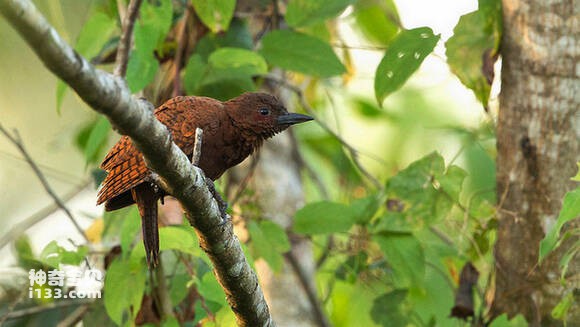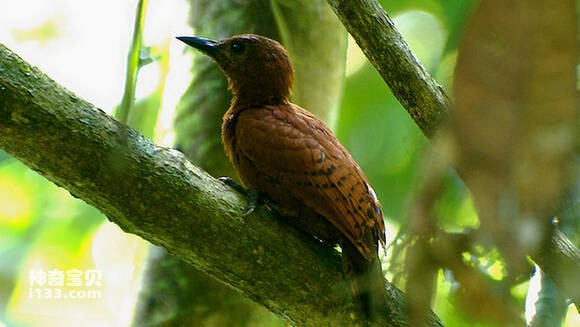Micropternus brachyurus
IUCN
LCBasic Information
Scientific classification
- name:Micropternus brachyurus
- Scientific Name:Micropternus brachyurus,Celeus brachyurus,Cinnamon Woodpecker,Rufous Woodpecker
- Outline:Climbing birds
- Family:
Vital signs
- length:21-24cm
- Weight:67-90g
- lifetime:No textual research information is available
Feature
Distribution and Habitat
It is distributed in Bangladesh, Bhutan, Brunei Darussalam, Cambodia, China, India, Indonesia, Lao People's Democratic Republic, Malaysia, Myanmar, Nepal, Singapore, Sri Lanka, Thailand, Vietnam.
It mainly inhabits broad-leaved forests, bamboo forests, marginal open forests, secondary forests and shrubland in low hills and plains below 1000 meters above sea level. It likes low elevation open woodland, secondary forest, forest margin, garden and plantation forest. It also occurs in open wilderness areas.
Appearance
The male of the chestnut woodpecker is brown and chestnut, with a slight brown head and a lighter feather margin. The occipital has a short crest, and the head and occipital have black plumage. The upper body, including both wings and tail, is covered with black stripes, especially the wings and tail stripes are wider and obvious. Chin, larynx and anterior neck feather margin light, slightly black brown plume. The undereye and cheek areas are red up to the tip of the ear feathers, forming a large red spot. The lower body is darker than the upper body. Dark brown markings on both sides.
The female is similar to the male but has no red spots under the eyes or on the cheeks. Both hypochondria, chest and abdomen have dark brown markings.
Juveniles are similar to females, with no erythema on the side of the head, but less pronounced or scaly markings on the thorax and abdomen.
The iris is dark brown or reddish-brown, the mouth is black, and the base of the lower mouth is stained wi
Details
The chestnut Woodpecker has nine subspecies: Micropternus brachyurus, Celeus brachyurus, Cinnamon Woodpecker, Rufous Woodpecker。

Chestnut woodpeckers are solitary. During reproduction, pairs and family groups are active, and generally do not cluster. Likes to hang out where there are ants. They often fly low in the woods. Flying position into a wave shape, and flying while singing, each rise and fall a song. It mainly feeds on ants and other ants。

The chestnut woodpecker's pecking sound is rarely heard. Cry: Short, sharp "kwee, kwee, kwee, kwee... ", 5-10 notes a drop. The chipping sound was short and slow.

The breeding season of the chestnut woodpecker is from April to June. Nest in a hole in a tree. The interior is lined with wood chips and dead grass. Each clutch lays 4-6 eggs, sometimes as few as 2 or 3, or as many as 7. The newly produced eggs are white in color and oval in shape. The size of the eggs is 25-30×17-21 mm. The male and female incubate the eggs in turn. Young birds are late sex.
Listed on the International Union for Conservation of Nature (IUCN) 2014 Red List of Threatened Species ver 3.1 - Not Threatened (LC).
It was included in the List of Beneficial Terrestrial Wildlife under State Protection or of Important economic and scientific research Value issued by the State Forestry Administration of China on August 1, 2000.
Protect wild animals and eliminate wild meat.
Maintaining ecological balance is everyone's responsibility!








